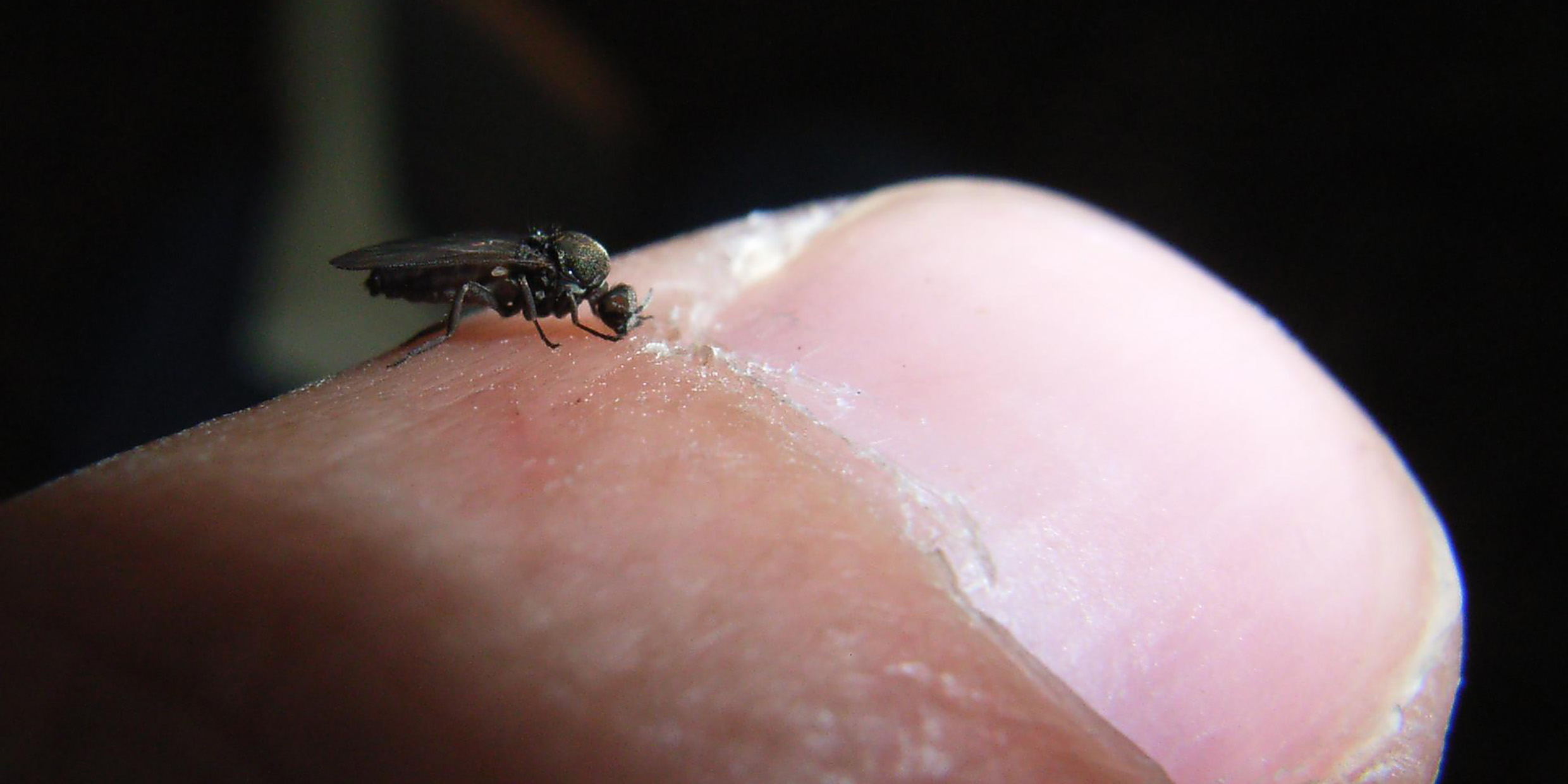Originally published 12 March 2002
EXUMA, Bahamas — The tropics are a wonderful place to consider our relationship with other species. I mean, you can hardly help it. Things that creep, slither, fly, or crawl invariably show up where you least expect them.
Geckos on the bedroom wall. Ants in the sugar bowl. Fruit flies in the trash can. Centipedes in your shoes. Giant hairy ground spiders (yikes!) in the flower beds. Hand-sized moths brushing your cheeks at night with their dusty wings.
As I write, my wife pops in to show me a scorpion she found clinging to a bath towel. “Here’s something to add to your list,” she says helpfully, whereupon she shakes the scorpion onto the floor and squashes it with her shoe.
Yesterday, we saw a 6‑foot boa constrictor making its languorous way across the driveway.
You can’t be squeamish and live in the tropics, unless you are willing to share your space with a host of unlovable beasties. Which is why we swat, spray, stomp, hack, and slap our way to creaturely solitude. Mouse traps, ant traps, roach bait, shoe leather, machete: interspecies murder is the name of the game. It’s them or us.
And yet, and yet…
The older I get, the less inclined I am to kill. It’s not that I’m getting sentimental. The rational part of me knows that interspecies murder is built into the very fabric of creation; without it, natural selection would grind very slow indeed.
Of course, from where I sit at the top of the food chain I don’t worry much about the struggle for survival. The scorpion on the bath towel might have given me a minor sting, at worst. On the other hand, a shark passed within 20 feet of me the other day while I was snorkeling. You can be sure I didn’t waste any time thinking about reverence for life. I got the heck out of the water.
No, it’s not sentimentality. Nor is it ecological wisdom.
I’ve studied enough ecology to know that humans can’t survive on this planet alone. We depend on other creatures to maintain the fertility of the soil, the composition of the atmosphere, the stability of climate, among other things too numerous to mention. But killing a single scorpion or boa isn’t going to throw the planet out of balance.
Nor is my unwillingness to kill religious. I remember Deuteronomy, of course (“I have set before you life and death, blessing and cursing: therefore choose life, that both thou and thy seed may live.”), which may be pretty good ecological advice, but it doesn’t mean much to me as a moral precept. I certainly don’t believe a supreme being will take disapproving note if I swat that bedroom gecko with a broom.
Then why don’t I do it? Well, for one thing, the gecko isn’t doing me any harm. In fact, I rather like having such beautiful creatures around. I like the boa too, and the frogs, and the brown racer snakes, although I prefer them to remain outside. I can’t say that I liked the shark, but there was nothing I could have done about it anyway.
The answer, I think, is this: My reluctance to kill has grown in direct proportion to what biologists have learned about the nature of life, and it has been my good fortune to live in a time when our understanding of biochemistry has expanded a thousandfold.
One of the nastiest creatures around here is the female sandfly, a no-see-um insect that swarms when the wind dies down and attacks your ankles with blood-sucking ferocity. Anyone who can resist slapping sandflies has a greater reverence for life than I, but even as I slap I wince, just a little.
The sandfly is smaller than a pepper grain, but under the microscope it has everything you’d expect of a bug: six legs, wings, eyes, antennae, bristles. At a deeper level of magnification one might see the vast and beautiful molecular music that plays unceasingly, the chemistry of life. Somewhere among my books and papers I have a wall-sized chart showing the chemical pathways and cycles of human metabolism; it is as dazzlingly complex as the plan for a vast petrochemical factory, and as satisfyingly beautiful as Michelangelo’s Pietà. The sandfly’s metabolism is hardly less complex or less beautiful.
Slapping a sandfly is like throwing paint on the Pietà or smashing a Rolex watch with a hammer. All that elaborate molecular machinery, the countless cells, each with its spinning DNA, the trillions of atoms flowing in symphonic perfection: Smush!
“If you study life deeply,” wrote Albert Schweitzer,” its profundity will seize you suddenly with dizziness.” And that’s why I’m more inclined to share my space with ants, centipedes, snakes, and spiders: a dizzy unwillingness to destroy a thing that in its own way is more exquisitely contrived than any object of human artifice.



